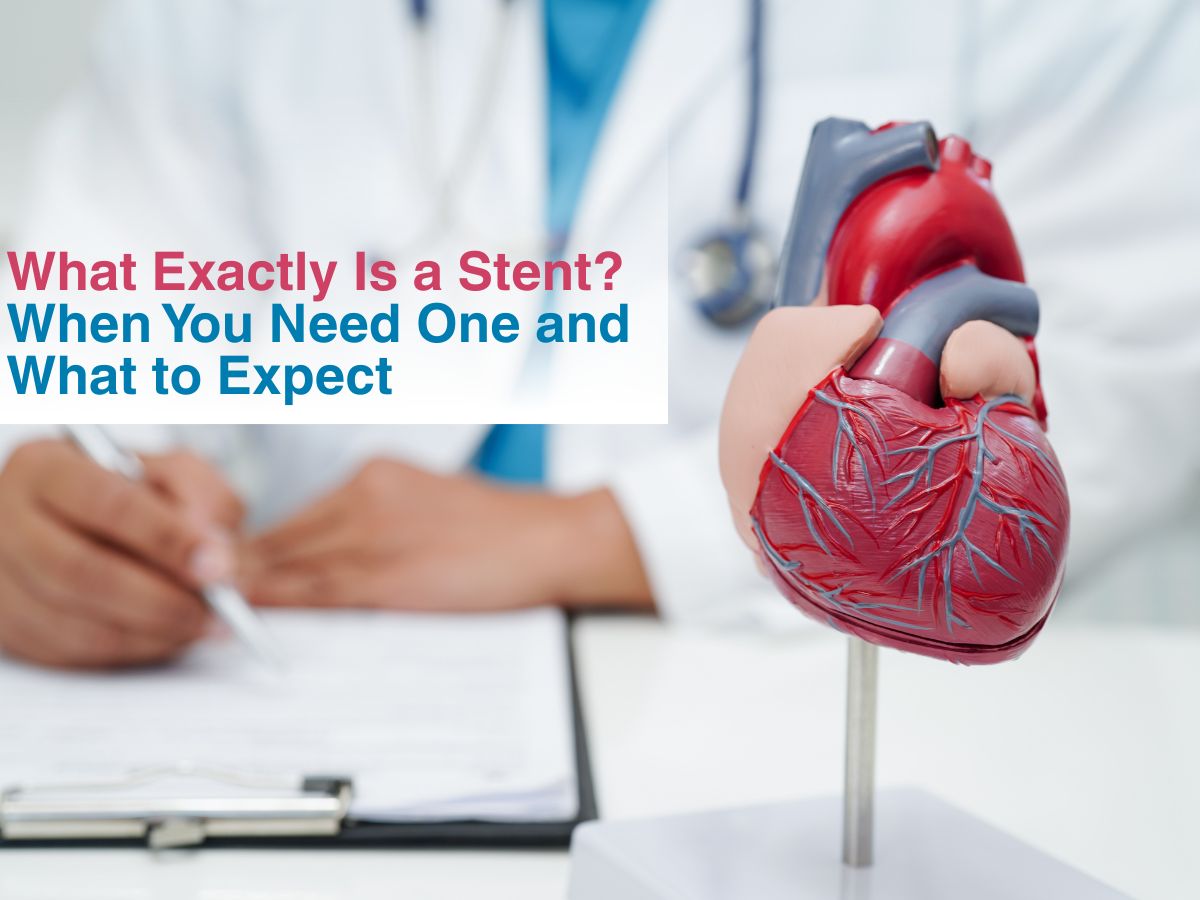
What Exactly Is a Stent? When You Need One and What to Expect

Stents are very helpful, implantable devices which are surgically inserted into narrowed arteries. Now, arteries can be thought of as the highways for oxygen rich blood in the body. Roadblocks are hence those spaces where blood is not able to flow freely- the most common cause for the roadblock can be plaques which have formed due to the consumption of a greasy, unhealthy diet over a long period of time. The good news is that this blockade can be removed- and the artery widened again, with the help of minimally invasive surgical procedures which involve the use of a balloon which can be inflated at the site of plaque formation, or a stent is inserted.
What Is A Stent And How Does It Work?
A stent is basically a metallic, mesh-like tube that can be inserted into blocked arteries.They are mostly 1.5-2 cm in length, though they can be much longer too. Their width can be between 2-5 mm – the same size as an artery itself. The stent can be made of stainless steel, platinum- chromium or cobalt-chromium- as they are strong and they don’t react with any bodily fluids. Stents can also have a coating of drugs- which is when they will be called drug-eluting stents. They release drugs to keep blood flowing easily, over a long period of time and the success rates with these stents are way better than normal stents alone. It basically works as a barrier and ensures that the artery cannot close in again. This means blood flow is good and cells get enough oxygen too. It also prevents plaques from forming again.
What To Expect During A Stent Placement Surgery?
Stent placement needs to be super accurate, which is why your cardiologist will image your blood vessels live, using X-Rays. First, you will be sedated if necessary and then an anaesthetic will be used, which means the whole procedure is going to be painless. Then, a long, hollow catheter is threaded up an artery- either from the wrist or from the groin. The catheter will have a very fine wire too, which will contain the balloon and stent- both of which are deflated. These will be threaded to the right location in the artery and then inflated. The balloon will help the stent sit snugly, in the arterial lining, so that the artery expands and stays open. Then, the surgeon will remove the catheter, balloon and the wire out and the whole procedure is done in under 60 minutes.
Recovery Time After Stent Placement
The stent will be a permanent fixture for your blood vessels and you will feel better in a few hours. Your heart will recover almost immediately. You can walk around, like normal if the catheter was threaded up your wrist. You will need to lie down for a few hours and rest, if it was threaded up via the groin. You should take it easy for the next week or two and no driving for the first 5-7 days after getting the procedure.
The risks and side effects of having a stent are very minimal, but still need to be discussed in detail. Aspirin and clopidogrel are prescribed- these will prevent the formation of blood clots. The artery will build itself up again and cells will engulf the stent in due course of time. The stent won’t be visible separately now, but will be present in the arterial wall and keep it from collapsing.
Conclusion
Both stent insertion and bypass surgery are used to deal with blocked arteries, but the scale is different. The main difference between a stent and bypass surgery is that the former is minimally invasive. The latter will involve the removal of a blood vessel from your arm or leg and then it will be grafted to the affected artery- so that blood flow can continue via a different path. Bypass is only recommended when you have extensive blockage or if you have other long term comorbid conditions. Stents are preferred for most patients as they will help you recover faster. But, open heart surgery is necessary for more complicated cases and there is nothing wrong with that. Your doctor will help you decide which method would work the best for you. It is your job to listen to their suggestions and recommendations, so you recover well and stay without incident afterwards.






